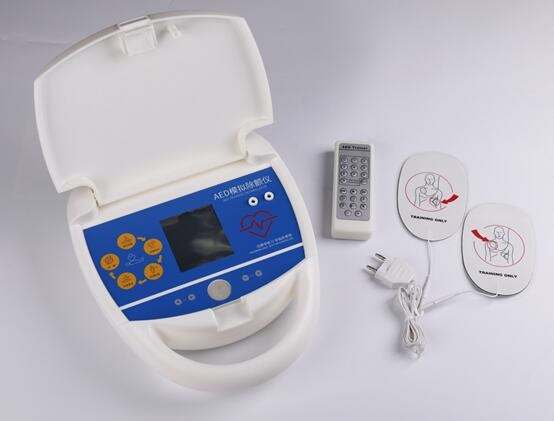

Article tag: AED| automated external defibrillator| Medical model|
Throughout the process, the patient's reaction should be continuously observed and the emergency number should be called as soon as possible to request assistance from professional medical personnel. Although using an AED is simple, you still need to be calm and pr...
The use of AED (automated external defibrillator) mainly includes the following steps:
Turn on the AED: Open the AED package, take out the device, and follow the prompts to turn on the power switch. Some models may require you to press the power button first.

Attach electrode pads to the patient: According to the diagram on the AED electrode pads, place one electrode pad on the upper right side of the patient's bare chest (right edge of the sternum, under the clavicle), and the other electrode pad on the outside of the patient's left nipple (left axilla). fifth intercostal space behind the front line). For infants and children, two electrode pads should be attached to the middle of the chest and the left shoulder blade behind the back. Do not interrupt cardiopulmonary resuscitation while applying electrode pads.
AED analyzes heart rhythm: Press the "Analyze" button on the AED, and the AED will start analyzing the patient's heart rhythm. At this time, ensure that no one comes into contact with the patient to avoid interfering with the analysis process.
Determine whether defibrillation is needed: After the analysis is completed, the AED will prompt whether defibrillation is needed through voice.
Perform defibrillation: If the AED recommends defibrillation, ensure that no one is touching the patient, then press the "Defib" button or wait for the AED to automatically discharge and defibrillate.
CPR and reassessment: Cardiopulmonary resuscitation (CPR) should be performed immediately after each defibrillation shock. After performing CPR for about 2 minutes (5 sets), check your heart rhythm again. If ventricular fibrillation persists, defibrillation can be performed again. If the patient regains consciousness or develops a conscious response (such as groaning) during CPR, compressions should be discontinued and vital signs reassessed.
Throughout the process, the patient's reaction should be continuously observed and the emergency number should be called as soon as possible to request assistance from professional medical personnel. Although using an AED is simple, you still need to be calm and prompt in an emergency. For non-professionals, it is very necessary to receive training in the use of AED so that they can use AED correctly and effectively for first aid at critical moments.